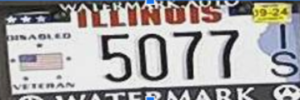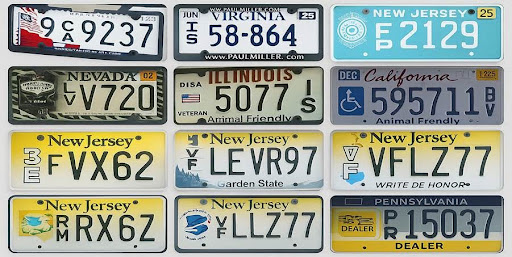The U.S. License Plate Quirk: Stacked Characters
Automatic License Plate Recognition (ALPR) systems have become indispensable for parking management, tolling, security access, and law enforcement. Yet one small design feature of many U.S. license plates – stacked characters – poses a big challenge that is often overlooked. In this post, we’ll explore why accurately reading these vertically stacked letters or numbers is crucial, how many ALPR solutions (especially those from abroad) fall short, and the real-world consequences of misreading or ignoring them.
 Many U.S. states include stacked characters on their license plates – small letters or numbers printed one above the other, usually at one side of the plate, alongside the main plate number. For example, standard passenger Maryland’s plates above show a stacked “C” and “A” in the middle of the main characters. States like Maryland have long utilized vertically stacked letters as part of their standard serial formats.
Many U.S. states include stacked characters on their license plates – small letters or numbers printed one above the other, usually at one side of the plate, alongside the main plate number. For example, standard passenger Maryland’s plates above show a stacked “C” and “A” in the middle of the main characters. States like Maryland have long utilized vertically stacked letters as part of their standard serial formats.
 Often, these tiny characters signify a special designation or series: a county, vehicle type, or a special registration (e.g., veteran or organizational plates). Stacked characters aren’t limited to standard-issue plates.
Often, these tiny characters signify a special designation or series: a county, vehicle type, or a special registration (e.g., veteran or organizational plates). Stacked characters aren’t limited to standard-issue plates.

In some jurisdictions, these stacked characters count as part of the official license number, while in others they do not – a headache of inconsistency for any automated reader. In short, stacked characters are common across the U.S. license plate landscape. Failing to capture them isn’t a rare edge case – it means missing critical data on a significant portion of plates nationwide. This is where many ALPR systems run into trouble.
Why Many ALPR Systems Struggle with Stacked Characters
Despite the prevalence of stacked characters in the U.S., many ALPR vendors – particularly those originally focused on Europe – have been caught off guard by this feature.
European plates typically have uniform layouts with characters in one or two straight rows. European ALPR engines often ignore stacked characters entirely or misread them. Some vendors even claim to support all plate formats but quietly classify stacked-character misreads as “unavoidable errors,” effectively sweeping the problem under the rug.
The bottom line: If your ALPR vendor hasn’t explicitly addressed stacked characters, you can bet their reads on U.S. plates will be error-prone.
Tiny Text, Big Challenge: Why Stacked Characters Are Hard to Read
Low Resolution
Stacked characters are smaller, often half the height of a normal plate letter, resulting in fewer pixels captured for recognition.
Non-Standard Placement
Stacked characters appear above and below one another, usually on the side or even in the middle of the serial sequence, breaking the normal straight-line pattern.
Varying Fonts and Symbols
Each state uses different fonts, styles, and sometimes symbols, creating a highly diverse reading environment.
Contrast and Reflectivity Issues
Stacked text can be placed near plate edges or over backgrounds like state logos, reducing OCR contrast and effectiveness.
The High Stakes of Misreads: Why ALPR Accuracy Matters
Lost Revenue in Parking and Tolling
Missing a character can mean unmatched transactions, leading to lost revenue and increased manual verification costs.
Security and Access Control Breaches
If stacked characters are missed, authorized vehicles may be denied entry, or unauthorized vehicles may gain entry.
Operational Inefficiencies and Manual Work
Every misread plate adds manual work, requiring staff to audit, correct, and manage disputes.
Customer Frustration and Brand Damage
Inaccurate ALPR results create negative customer experiences and harm the service provider’s reputation.
Law Enforcement Misidentifications
A misread can lead to wrongful stops or arrests, with serious consequences for agencies and civilians alike.
No Character Left Behind: Choosing the Right ALPR Solution
The ability to accurately read stacked characters on U.S. plates is critical. When evaluating ALPR systems, demand proof of accuracy, including these challenging elements.
Don’t let vendors obscure poor performance with fine print or selective reporting. Every plate read matters, especially those involving vertically stacked characters.
Conclusion: Solving the Stacked Character Challenge in ALPR
A reliable ALPR system must capture every part of the license plate, including small, stacked characters. The devil is truly in the details – and that includes the vertically stacked ones. Choosing a solution that can handle this complexity ensures better accuracy, higher revenue retention, improved security, and superior customer experiences.

